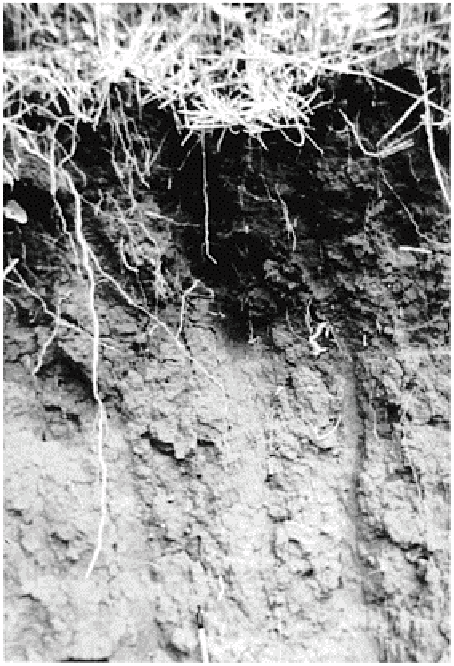Environmental Engineering Reference
In-Depth Information
Plate 22.4
A lateritic soil (FAO Rhodic Ferralsol) with thin
humus (Ah) over infertile red earth (see box). Roots are
concentrated at the surface in order to 'catch' nutrients as
they are released by mineralization. The pen shows the scale.
Photo: Ken Atkinson.
few years. These traditional indigenous technologies are well adapted to their local
environment unless disturbed by rapid population growth, economic exploitation from
outside, or imposed land tenure changes. However, pressure from one or more of these
three factors renders a complex, sophisticated and elegant system unsustainable as
inappropriate alien technologies replace traditional practices. Tropical rain forests are
frequently replaced by plantation crops (oil palm, rubber, cacao, coffee, sisal). Such crops
normally reduce the total amount of nutrients within the cycle. Stem flow is accelerated,
and management techniques like weeding increase surface run-off. This, in conjunction
with harvesting, leads to large losses of nutrients. The biomass and soil stores are likely
to hold the bulk of the nutrients. The net result of both shifting cultivation and plantation
agriculture is to drastically alter nutrient cycles from a fundamentally stable natural

